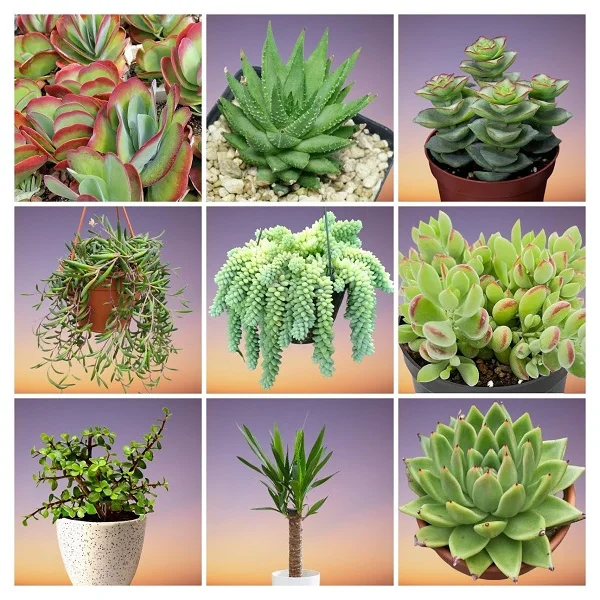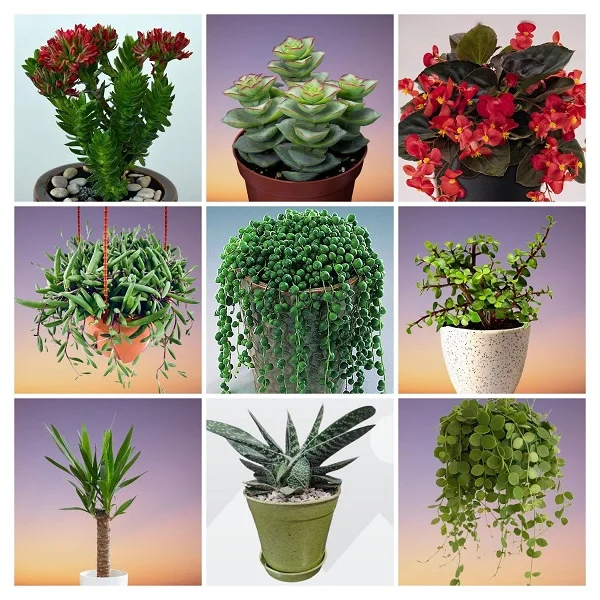Pig's Ear Plant (Cotyledon orbiculata) Care Indoors, Common Problems and Solutions
Some links in this post may be affiliate links
Pig's Ear Plant (Cotyledon orbiculata) requires very bright light to full sunlight, average warmth, moderate humidity and moderately moist, rich, well-drained soil coupled with monthly feeding in the growing season.
Cotyledon orbiculata also called Round-leafed Navel-wort, Silver Pig's Ears or Round-leafed Cotyledon is a popular and easy-care succulent plant for the indoors.
The shape of the leaf has a resemblance to a pig's ear and hence the common name, 'Pig's Ear'. The leaves are grey-green and are covered with a white powdery substance which helps them to reflect light and allows them to conserve water.
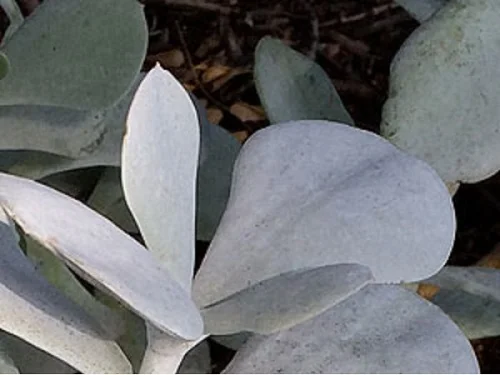
Botanical name: Cotyledon orbiculata
Family: Crassulaceae
Common names: Pig's Ear Plant, Round-leafed Navel-wort, Silver Pig's Ears, Round-leafed Cotyledon
Origin
Cotyledon orbiculata is native to South Africa where it is found growing in rocky outcrops in grassy shrubland and the Karoo region.
Size
Round-leafed Navel-wort grows to a height of about 4 feet and the leaves are about 5 inches by 3 inches
Flower
Silver Pig's Ears Plant bears small bell-shaped flowers usually 1.2 inches long which droop from the top of a 24 inches tall stalk. The flowers are usually orange-red but yellow varieties also exist.
Cotyledon orbiculata Varieties
A large number of varieties and cultivated forms of Cotyledon orbiculata are available, some of which may resemble Kalanchoe thyrsiflora (Paddle Plant).
Invasiveness
According to Wikipedia, Pig's Ear Plant is considered an invasive plant in New Zealand.
Is Pig’s Ear Plant toxic to pets?
The leaves of Cotyledon orbiculata Succulent contain cotyledontoxin which is toxic to sheep, goats, horses, cattle, poultry and dogs according to journals.co.za. If ingested it causes a condition called cotyledonosis. Keep the plant out of the reach of animals.
Why grow Pig’s Ear Plant indoors?
- Low-maintenance: It requires minimal watering and thrives on neglect.
- Drought-tolerant: It stores water in its leaves, making it hard to kill.
- Unique and beautiful: The thick, green leaves with red edges resemble pig’s ears.
- Blooms indoors: It produces bell-shaped orange-red flowers in the right conditions.
Related Plants
Pig's Ear Plant is closely related to the following plants which are also great plants for the home.
1. Cotyledon undulata (Silver Crown Plant)
2. Cotyledon campanulata (Bell-flowered Cotyledon)
3. Cotyledon pendens (Cliff Cotyledon)
4. Cotyledon tomentosa (Bear's Paw Succulent)
5. Cotyledon velutina (Velvet Cotyledon)
Where to Buy
If you are looking to add Round-leafed Navel-wort to your plant collection, you may obtain these plants online from Etsy (Link to Etsy).
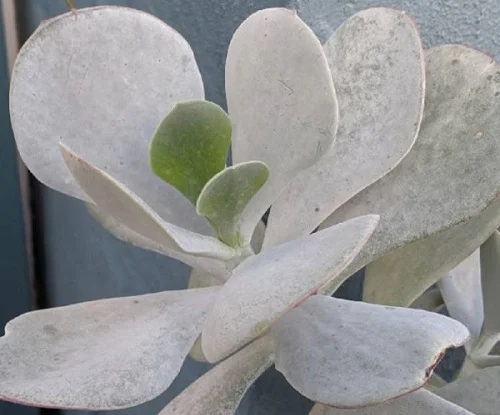
Cotyledon orbiculata Care Indoors
Whether you are an experienced succulent collector or a beginner plant parent, this plant is one of the easiest to grow indoors. Let’s dive into the best ways to keep your Pig’s Ear Plant happy, healthy, and thriving.
Pig's Ear Succulent grows best in very bright light to full sunlight, average warmth of 16-260C, moderate humidity of 50-55% and moderately moist, rich, well-drained, succulents soil coupled with monthly feeding during the growing season.
Cotyledon orbiculata repotting is only needed when the plant becomes pot-bound. Pruning is necessary to keep the plant neat and to minimize pest and disease infestations. Keep reading for a detailed outline on the best growing conditions for this plant and how to provide them.
Watering
Water your Cotyledon orbiculata Succulent thoroughly during the growing season and allow the top 2-3 inches of soil to dry out between waterings. Maintain the soil moderately moist and avoid overwatering. Too much moisture can cause yellowing and mushy leaves.
Significantly decrease watering in the cold season to keep the soil slightly moist. However, do not allow the soil to dry out completely to prevent wrinkling and drooping leaves.
Always make sure that the pot has a drainage hole and that the soil is free-draining to prevent it from getting soggy to avoid root-rot and eventual loss of the plant.
Avoid wetting the leaves as it can lead to rotting. Water from the bottom instead. Use room temperature water to Round-leafed Navel-wort to avoid shocking this tropical plant.
Light Requirements
Pig's Ear Plant grows best in very bright light to full sunlight. Keep it away from hot direct sunshine to avoid shriveling and yellowing leaves.
Too low light will result in slow growth and pale-green leaves. Move the plant to a brighter place or use a grow light if the natural lighting is not sufficient.
Should you choose to grow the Silver Pig's Ears Succulent outdoors, gradually acclimate it and place it in a shaded place to avoid scorching the leaves.
Temperature and Humidity
Average warmth of 16-260C are ideal for Cotyledon orbiculata. The sudden change in temperature between day and night is excellent for this succulent plant. Average room humidity of 50-55% is adequate for this plant. It has no need for extra humidity.
Fertilizer
Feed your Pig's Ear Succulent monthly during the growing period with a balanced, liquid fertilizer. Withhold feeding in the cold season as growth is minimal at this time. Avoid too much fertilizer; it can cause leggy growth.
Flush out accumulated salts from the soil regularly by running a stream of water through the soil until the water comes out through the drainage hole. Allow it to run for a few minutes and repeat the process several times.
Potting Mix
The best potting medium for Cotyledon orbiculata is a well-draining, sandy mix that is rich in organic matter. The soil should be loose enough to allow water to drain out fast enough. Cactus and succulents mix are perfect for this plant.
Repotting
Repot your Pig's Ear Succulent only when it becomes pot-bound. Use a shallow rather than a deep pot as they have shallow roots. The pot should be only 1 size larger than the current one.
Ensure the pot has a drainage hole to prevent the soil from getting soggy as it can lead to rotting. A clay pot is preferable for this plant because it is porous and therefore allows the soil to dry out faster. Take a look at these terracotta pots on Amazon.
Pruning
Pruning Cotyledon orbiculata requires the removal of dead and diseased leaves to maintain the plant neat and discourage pests and diseases. Remove dead flowers also to keep the plant neat and tidy.
Pig's Ear Succulent Propagation
Pig's Ear Succulent (Cotyledon orbiculata) can be propagated at the beginning of the growing season from stem-tip cuttings or from leaf cuttings which can be successfully rooted either in water or in soil.
Read more on these 4 Ways of Pig's Ears Succulent (Cotyledon orbiculata) propagation.
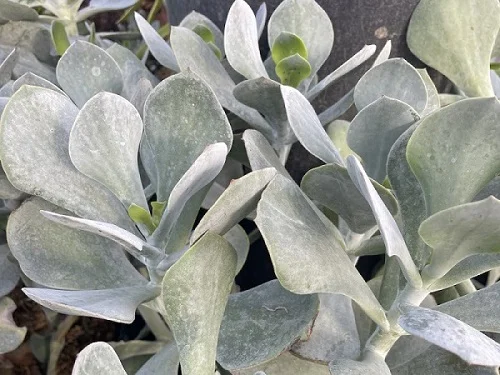
Pig's Ear Plant Problems with Remedies
Cotyledon orbiculata Succulent common problems include leaf drop, leaf spots, yellow leaves, leggy growth, diseases and pests among others. Keep reading for more on these problems, their remedies and solutions.
Pests
Common pests in Pig's Ear Plant are mealybugs and scale insects. Isolate the affected plant to reduce spread to other plants and treat it with insecticidal soap or neem oil. Ensure to follow the manufacturer's instructions on the label.
Yellow leaves
One of the causes of yellow leaves in Cotyledon orbiculata is overwatering. Do not water on a schedule, water only when the top 2-3 inches dry out.
The second possible cause of yellow leaves in Pig's Ear Succulent is underwatering. Do not allow the soil to dry out completely for a prolonged period of time.
Brown soft leaf spots
The cause of brown soft spots in Cotyledon orbiculata is leaf spot disease which is prevalent in poor air circulation. Ensure there is free air flow at all times to reduce disease infestation.
Rotting plant base, yellowing and shriveled leaves
Rotting plant base followed by yellowing and shrivelled leaves in Pig's Ear Plant is an indication of stem-rot disease which is brought about by overwet conditions.
Avoid overwatering and ensure that the pot has a drainage hole and the soil is free-draining to prevent it from getting soggy. In addition, avoid wetting the foliage during watering and ensure that there is good ventilation.
Dropping (shedding) leaves
Dropping (shedding) leaves in Cotyledon orbiculata Succulent are caused by improper watering; either overwatering or underwatering. Water the plant liberally during the growing season and allow the top 2-3 inches of soil to dry out between waterings.
Significantly reduce watering in the cold season to keep the soil slightly moist but never allow the soil ball to dry out completely. Avoid soggy soil by ensuring that the pot has a drainage hole and the soil is free-draining. Learn more on how to water houseplants the correct way.
Weak and leggy growth
A weak and leggy growth in Pig's Ear Plant is an indication of too little light; the plant is reaching for light therefore it stretches. You can resolve this issue by moving the plant to a brighter spot or instaling a grow light if the natural light is insufficient.
Conclusion
Pig’s Ear Plant (Cotyledon orbiculata) is a hardy, beautiful, and low-maintenance succulent that makes a fantastic indoor plant. Whether displayed in a pot, rock garden, or succulent arrangement, this quirky plant adds charm and character to any space. With these care tips, you will have a healthy and thriving Pig’s Ear Plant for many years.
Frequently Asked Questions
1. How much sunlight does Pig’s Ear Plant need?
Pig’s Ear Plant thrives in 6-8 hours of bright indirect sunlight.
2. How often should I water Pig’s Ear Plant?
Do not water on a schedule. Water Pig’s Ear Plant only when the top 2-3 inches of soil have dried out.
3. Can Pig’s Ear Plant grow in low light?
No, Pig’s Ear Plant needs bright light to maintain its compact shape and red-edged leaves.
4. How fast does Pig’s Ear Plant grow?
Pig’s Ear Plant has a slow to moderate growth rate, but thrives in the right conditions.
5. Why are my Pig’s Ear leaves turning yellow?
Yellowing leaves in your Pig’s Ear Plant is usually due to overwatering or poor drainage.
6. What are the brown spots on Cotyledon orbiculata?
Brown spots on Cotyledon orbiculata may be caused by overwatering, underwatering, scorching, pests infestation or fungal leaf spot disease.
You liked it? Share on social media.
Related Content
Amazon Associates Disclosure
Homeplantsguide.com is a participant in the Amazon Services LLC Associates Program, an affiliate advertising program designed to provide a means for sites to earn advertising fees by advertising and linking to amazon.com.




